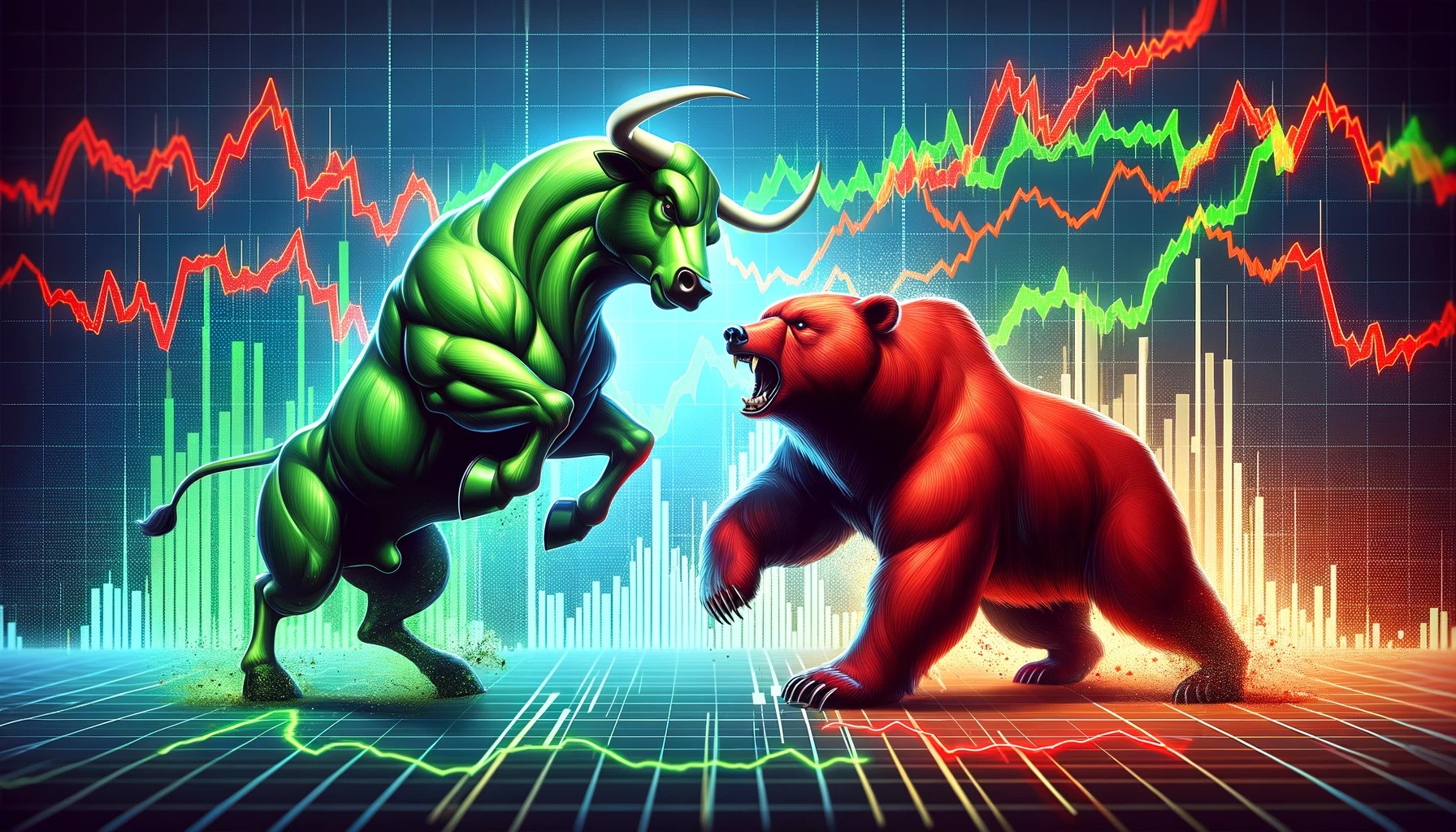
In the world of economics and finance, the terms "bullish" and "bearish" are ubiquitous.
These terms help describe investor sentiment and the general direction of markets or individual assets. Understanding these concepts is crucial for anyone involved in trading, investing, or economic analysis. This article delves into the origins, meanings, implications, and historical contexts of bullish and bearish sentiments, providing a comprehensive understanding of their roles in the financial world.
Origins of the Terms
The terms "bull" and "bear" have historical roots dating back to early stock exchanges. The origin of these terms is often attributed to the way each animal attacks its opponent: a bull thrusts its horns upward (representing rising prices), while a bear swipes its paws downward (representing falling prices). Over time, these metaphors became ingrained in financial vernacular.

Defining Bullish and Bearish Sentiments
Bullish Sentiment
- Definition: A bullish sentiment reflects optimism about the market's future performance. Investors believe that prices will rise, leading to increased buying activity.
- Characteristics: Bullish markets are characterized by rising prices, high investor confidence, and often an expanding economy. Bullish investors, or "bulls," actively seek to buy assets in anticipation of future price increases.
- Implications: A bullish sentiment can drive asset prices higher, as increased demand leads to upward pressure on prices. This can create a positive feedback loop, where rising prices attract more investors, further driving prices up.
Bearish Sentiment
- Definition: A bearish sentiment reflects pessimism about the market's future performance. Investors believe that prices will fall, leading to increased selling activity.
- Characteristics: Bearish markets are characterized by falling prices, low investor confidence, and often a contracting economy. Bearish investors, or "bears," seek to sell assets to avoid losses or to short-sell in anticipation of future price declines.
- Implications: A bearish sentiment can drive asset prices lower, as increased supply leads to downward pressure on prices. This can create a negative feedback loop, where falling prices drive more investors to sell, further depressing prices.

Historical Context and Examples
Historical Bull Markets
- 1920s (Pre-Great Depression): The "Roaring Twenties" saw a massive bull market driven by technological advancements, industrial growth, and speculative investments. This period ended with the 1929 stock market crash.
- 1980s-1990s (Dot-com Boom): Advances in technology and the rise of the internet led to a significant bull market. Companies in the tech sector saw their stock prices soar, culminating in the dot-com bubble burst in 2000.
- 2009-2020 (Post-Financial Crisis Recovery): After the 2008 financial crisis, global markets experienced a prolonged bull market fueled by low interest rates, quantitative easing, and robust corporate earnings. This period ended with the COVID-19 pandemic-induced crash in early 2020.
Historical Bear Markets
- Great Depression (1929-1939): Following the 1929 crash, the global economy entered a severe and prolonged bear market characterized by massive unemployment, deflation, and economic contraction.
- 2000-2002 (Dot-com Bust): The bursting of the dot-com bubble led to a significant bear market, with many technology companies experiencing sharp declines in stock prices.
- 2007-2009 (Global Financial Crisis): The collapse of the housing bubble and the subsequent financial crisis led to a global bear market, with major stock indices losing significant value.
Impact on Different Markets
Stock Markets
- Bullish Markets: During bullish periods, stock prices generally rise, investor confidence is high, and trading volumes increase. Companies often experience higher valuations, making it easier to raise capital through equity offerings.
- Bearish Markets: During bearish periods, stock prices generally fall, investor confidence wanes, and trading volumes may decrease. Companies often face lower valuations, making it harder to raise capital.

Commodity Markets
- Bullish Markets: Commodity prices rise due to increased demand or supply constraints. For example, a bullish oil market may result from geopolitical tensions limiting supply or increased industrial activity boosting demand.
- Bearish Markets: Commodity prices fall due to decreased demand or oversupply. For example, a bearish gold market may result from reduced investor interest in safe-haven assets during periods of economic stability.
Bond Markets
- Bullish Markets: In the bond market, bullish sentiment typically means falling yields (rising bond prices) as investors seek the safety of fixed-income securities, often driven by economic uncertainty or declining interest rates.
- Bearish Markets: Bearish sentiment in the bond market typically means rising yields (falling bond prices) as investors shift towards riskier assets, often driven by economic growth or rising interest rates.
Foreign Exchange Markets
- Bullish Markets: In forex, a bullish sentiment towards a currency means it is expected to strengthen against others. This can be driven by factors like higher interest rates, strong economic performance, or political stability.
- Bearish Markets: Conversely, a bearish sentiment towards a currency means it is expected to weaken. This can be driven by factors like lower interest rates, economic downturns, or political instability.
Factors Influencing Bullish and Bearish Sentiments
Economic Indicators
- GDP Growth: Strong GDP growth often leads to bullish sentiment, as it indicates a healthy economy. Conversely, weak GDP growth can lead to bearish sentiment.
- Employment Rates: High employment rates are generally bullish, signaling economic strength and consumer confidence. High unemployment rates are bearish, indicating economic weakness.
- Inflation: Moderate inflation is often bullish, reflecting healthy economic activity. Hyperinflation or deflation is typically bearish, signaling economic instability.
Corporate Earnings
- Positive Earnings Reports: Strong corporate earnings can drive bullish sentiment, as they indicate robust business performance and profitability.
- Negative Earnings Reports: Weak corporate earnings can drive bearish sentiment, signaling potential financial difficulties and reduced profitability.
Interest Rates
- Low Interest Rates: Generally bullish for stocks and bonds, as they reduce borrowing costs and encourage investment.
- High Interest Rates: Often bearish for stocks and bonds, as they increase borrowing costs and reduce disposable income for consumers and businesses.
Geopolitical Events
- Stability: Political stability and favorable trade agreements can drive bullish sentiment by creating a favorable business environment.
- Instability: Political instability, wars, or unfavorable trade policies can drive bearish sentiment by creating uncertainty and potential economic disruption.
Psychological Aspects of Bullish and Bearish Sentiments
Herd Behavior
- Investors often follow the actions of others, leading to herd behavior. In a bullish market, this can amplify upward price movements as more investors buy in. In a bearish market, it can amplify downward movements as more investors sell.
Overconfidence and Panic
- During bull markets, overconfidence can lead to excessive risk-taking and speculative bubbles. During bear markets, panic selling can lead to sharp declines and market crashes.
Strategies for Bullish and Bearish Markets
Bullish Strategies
- Long Positions: Buying stocks or other assets in anticipation of price increases.
- Call Options: Purchasing call options to benefit from rising prices.
- Growth Investing: Focusing on companies with strong growth potential.
Bearish Strategies
- Short Selling: Selling borrowed stocks or assets with the expectation of buying them back at lower prices.
- Put Options: Purchasing put options to benefit from falling prices.
- Defensive Investing: Focusing on stable, dividend-paying stocks or safe-haven assets like gold.
Conclusion
Understanding bullish and bearish sentiments is crucial for navigating the financial markets. These sentiments drive market trends, influence investment strategies, and impact economic indicators. By recognizing the factors that contribute to these sentiments and the historical contexts in which they have occurred, investors can make more informed decisions and better manage their portfolios. Whether you're a seasoned trader or a novice investor, grasping the concepts of bullish and bearish markets will enhance your ability to interpret market signals and respond effectively to changing economic conditions.